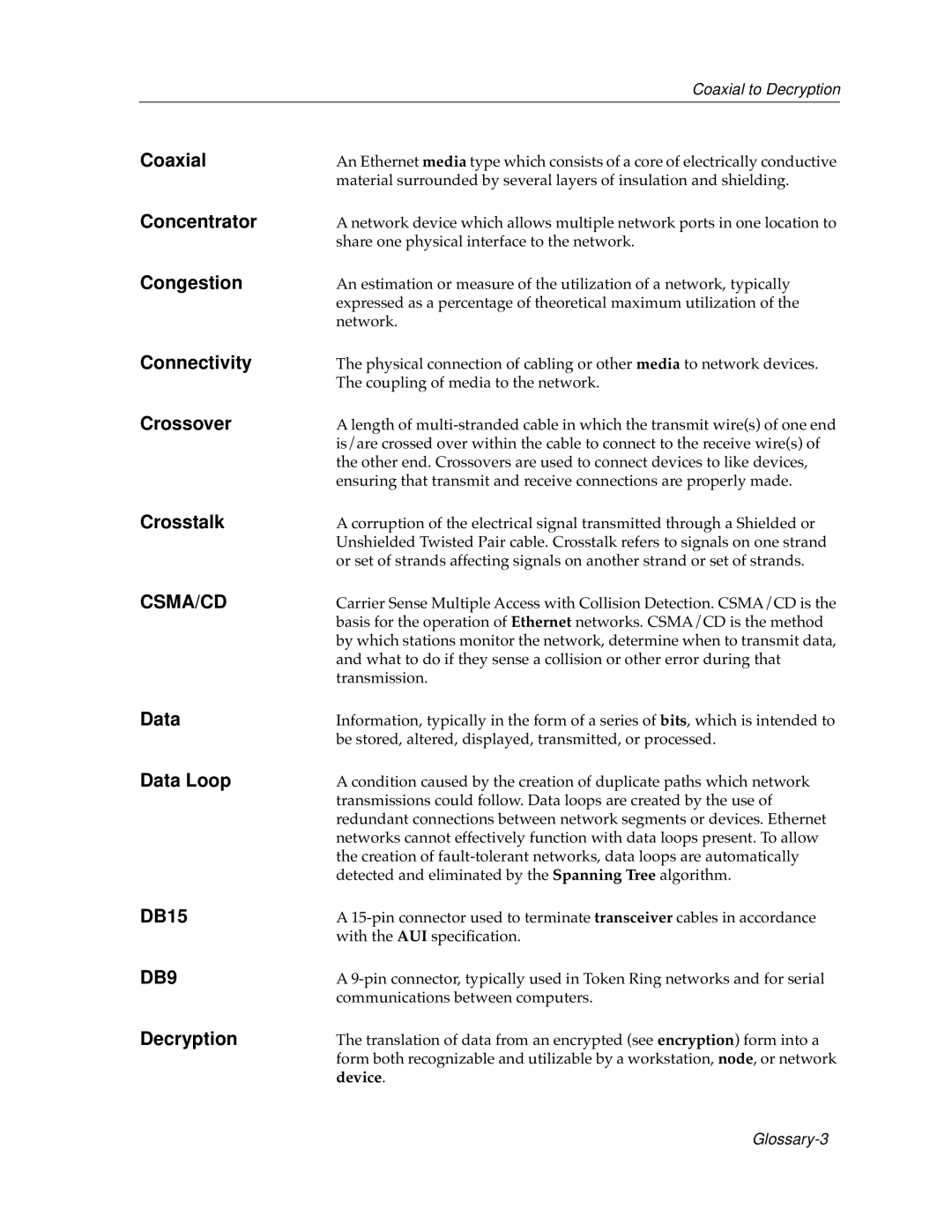| Coaxial to Decryption |
Coaxial | An Ethernet media type which consists of a core of electrically conductive |
| material surrounded by several layers of insulation and shielding. |
Concentrator | A network device which allows multiple network ports in one location to |
| share one physical interface to the network. |
Congestion | An estimation or measure of the utilization of a network, typically |
| expressed as a percentage of theoretical maximum utilization of the |
| network. |
Connectivity | The physical connection of cabling or other media to network devices. |
| The coupling of media to the network. |
Crossover | A length of |
| is/are crossed over within the cable to connect to the receive wire(s) of |
| the other end. Crossovers are used to connect devices to like devices, |
| ensuring that transmit and receive connections are properly made. |
Crosstalk | A corruption of the electrical signal transmitted through a Shielded or |
| Unshielded Twisted Pair cable. Crosstalk refers to signals on one strand |
| or set of strands affecting signals on another strand or set of strands. |
CSMA/CD | Carrier Sense Multiple Access with Collision Detection. CSMA/CD is the |
| basis for the operation of Ethernet networks. CSMA/CD is the method |
| by which stations monitor the network, determine when to transmit data, |
| and what to do if they sense a collision or other error during that |
| transmission. |
Data | Information, typically in the form of a series of bits, which is intended to |
| be stored, altered, displayed, transmitted, or processed. |
Data Loop | A condition caused by the creation of duplicate paths which network |
| transmissions could follow. Data loops are created by the use of |
| redundant connections between network segments or devices. Ethernet |
| networks cannot effectively function with data loops present. To allow |
| the creation of |
| detected and eliminated by the Spanning Tree algorithm. |
DB15 | A |
| with the AUI specification. |
DB9 | A |
| communications between computers. |
Decryption | The translation of data from an encrypted (see encryption) form into a |
| form both recognizable and utilizable by a workstation, node, or network |
| device. |
Page 121
Image 121
